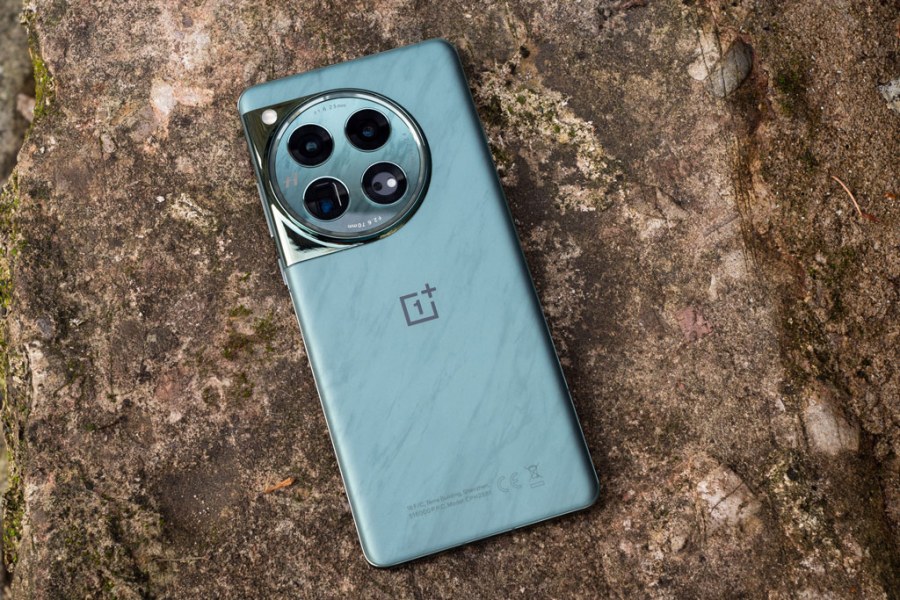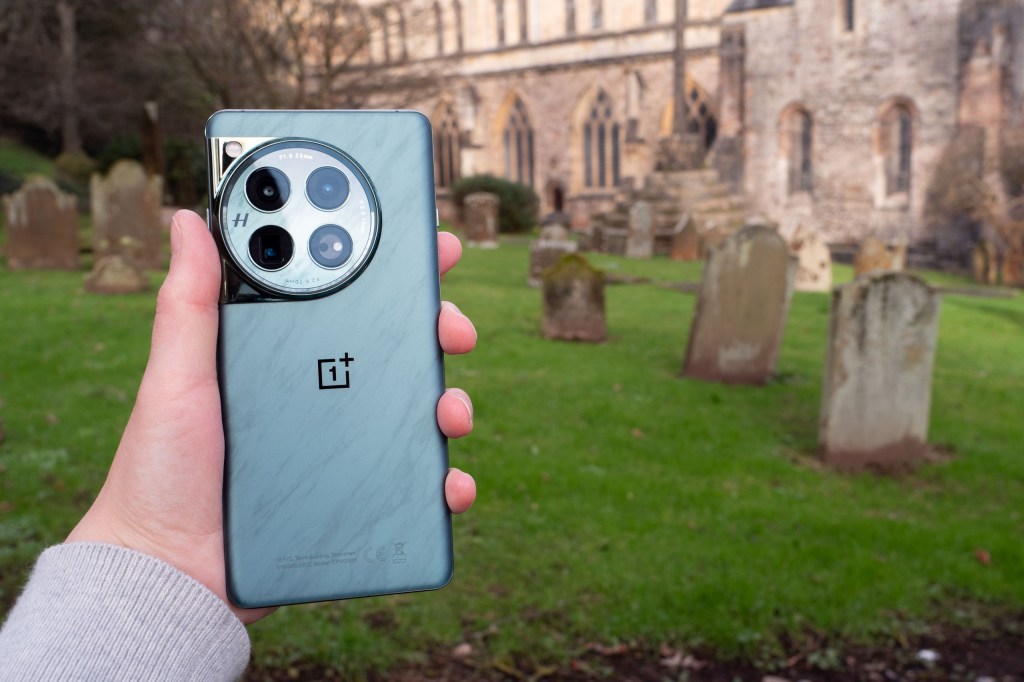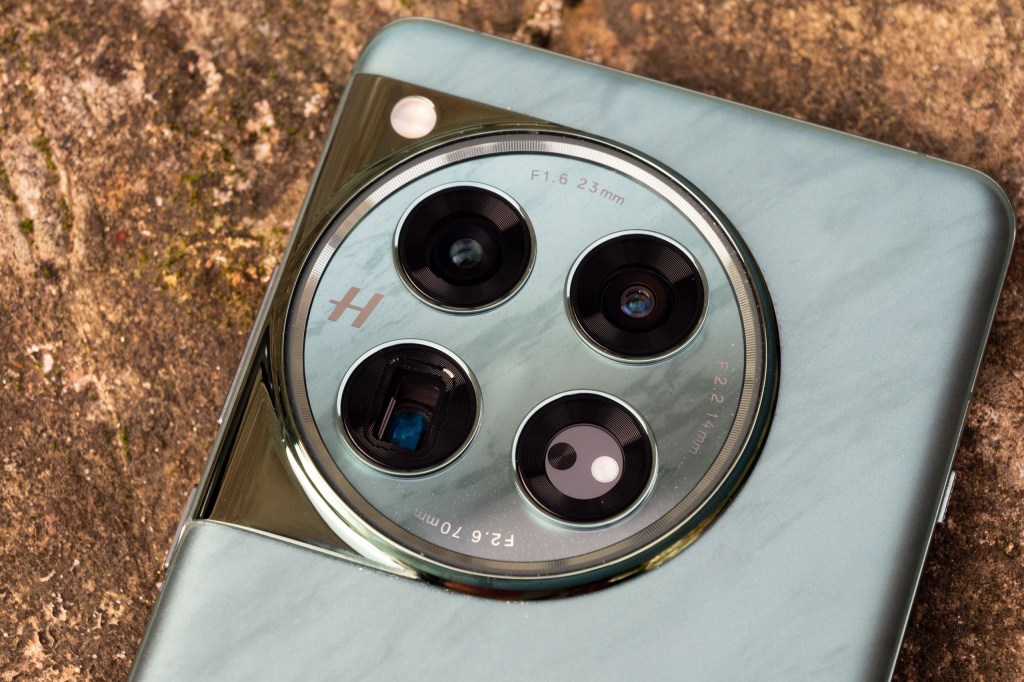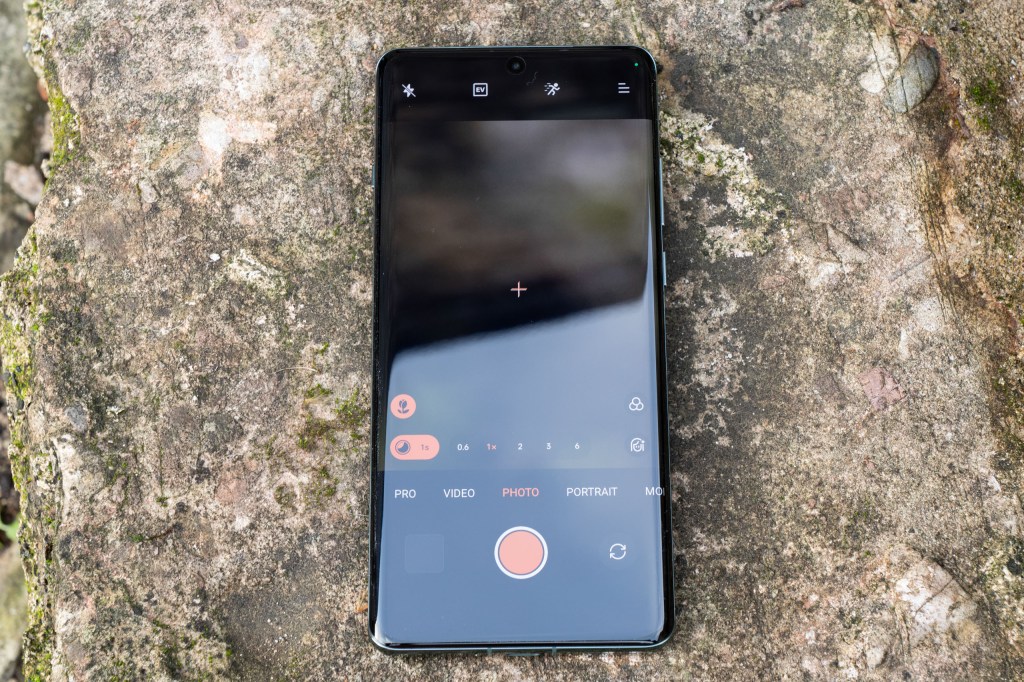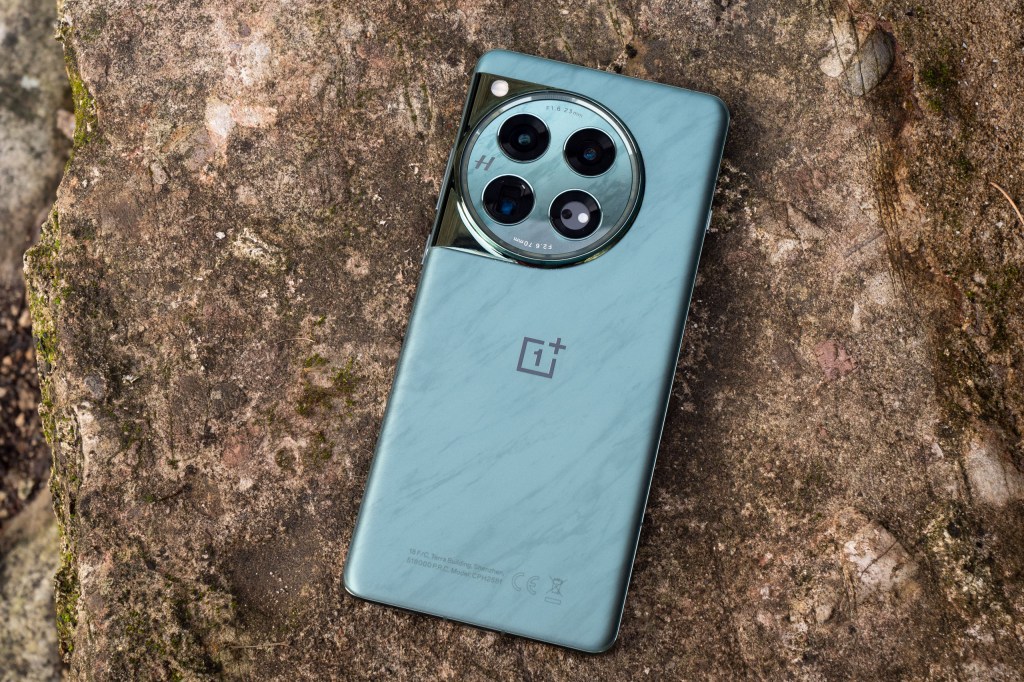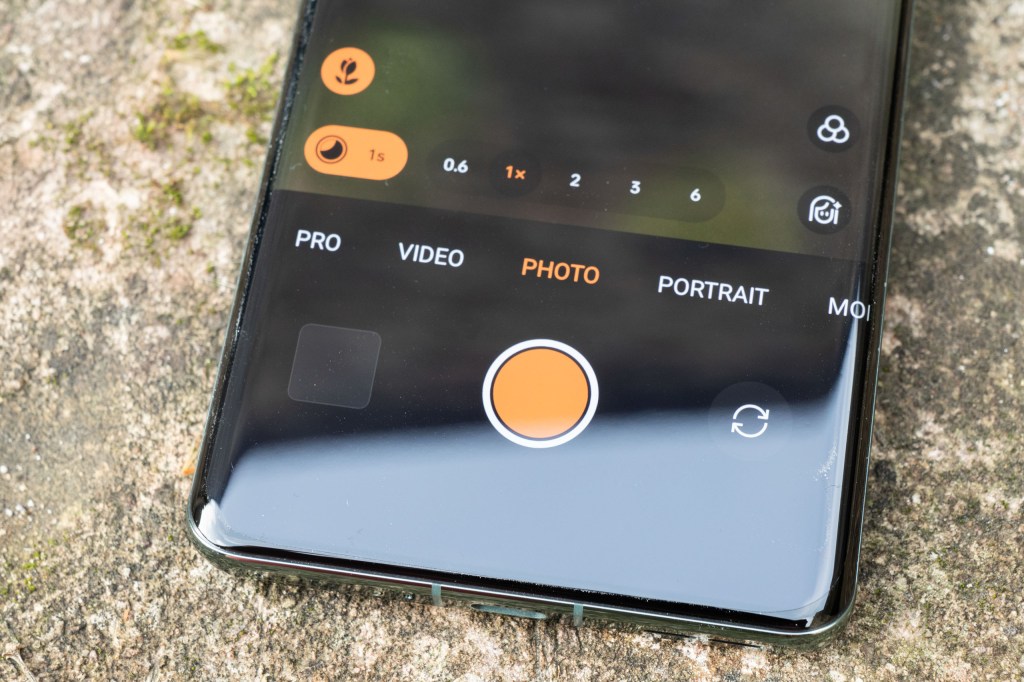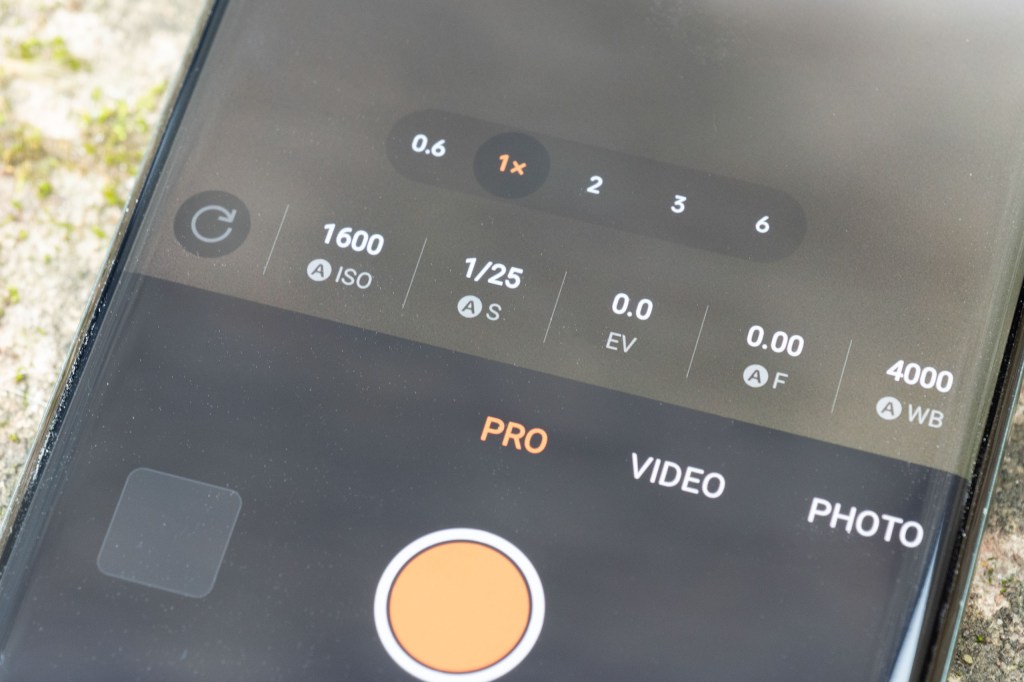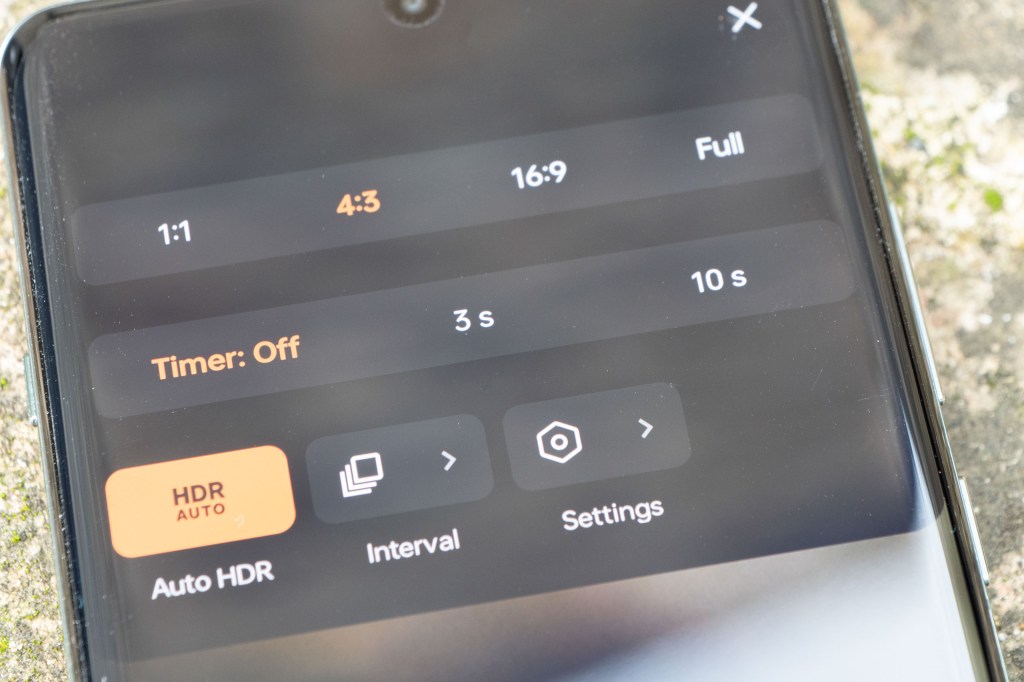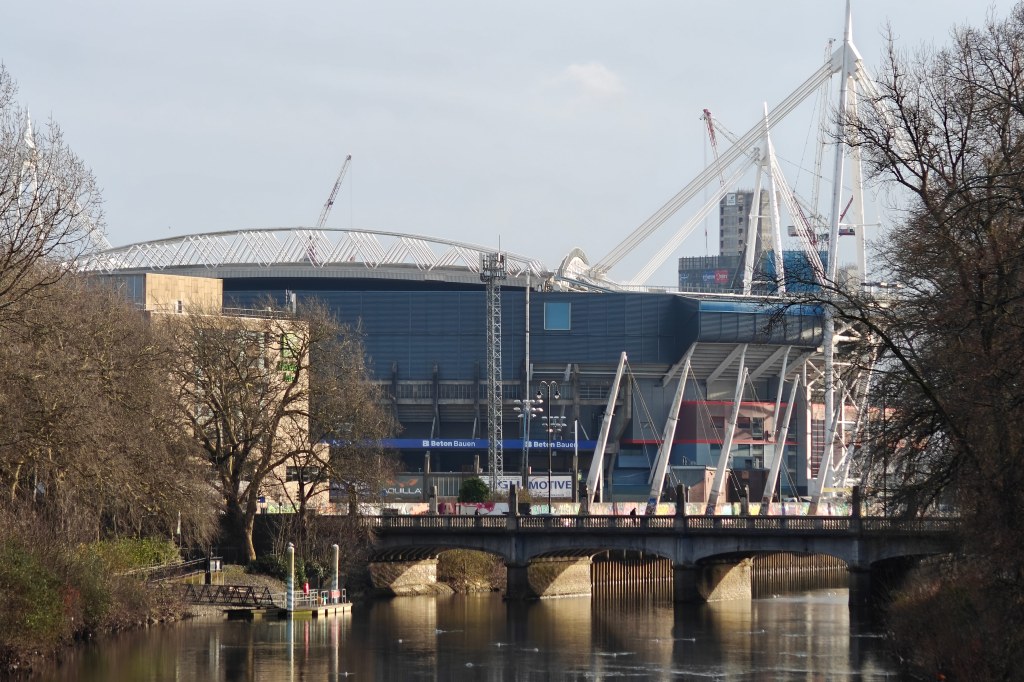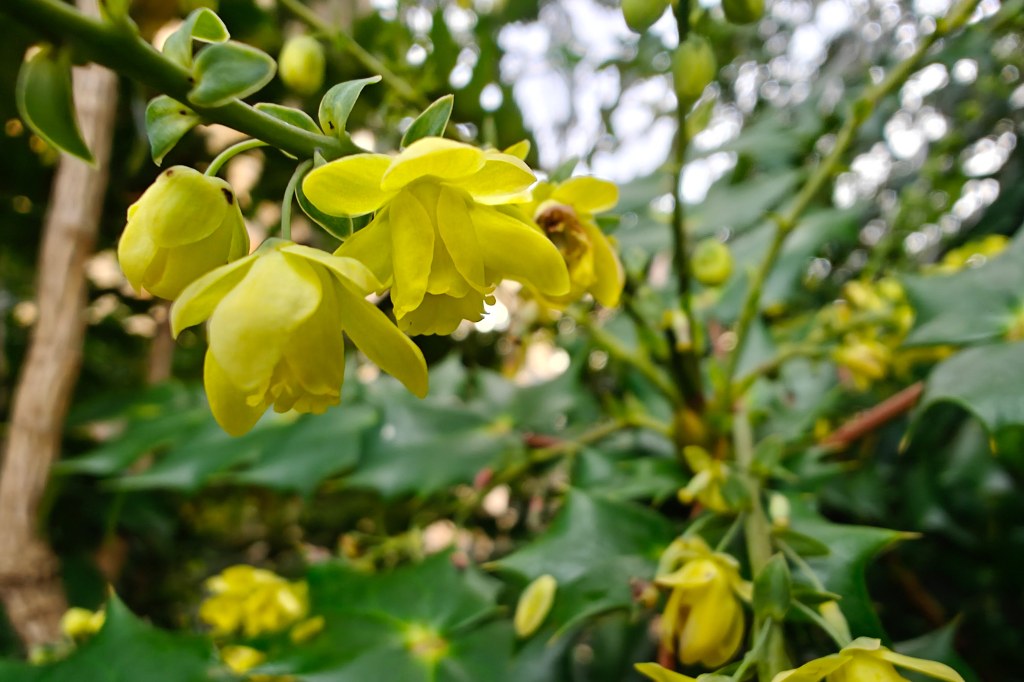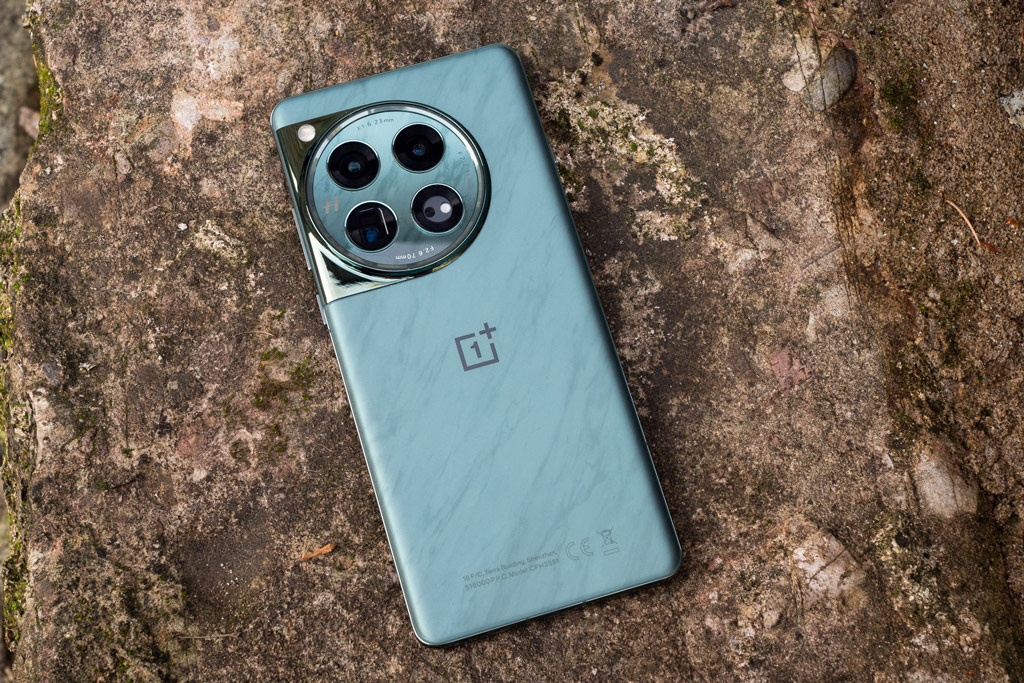Amateur Photographer verdict
A well-performing model with improvements in cameras, giving excellent image quality across various conditions.- Good value flagship
- Pro mode
- Hasselblad portrait modes
- Fairly short telephoto lens
- Raw shooting only in Pro mode, can’t shoot JPEGs simultaneously
- Selfie camera fixed focus only
OnePlus has long been a fantastic option in the “mid-range” price points for flagship smartphones. The OnePlus 12 sits right at the top of the OnePlus smartphone line-up, following on from the success of last year’s OnePlus 11. The company has ditched the “Pro” moniker it used a couple of years ago, while there is also a lower cost OnePlus 12R also available if you want to spend less.
The company likes to boast of its high-end specs for less than high-end prices. As such, we get a superb triple array for the camera, industry leading screen technology and 8K video in something which is significantly lower in price than equivalent models from the likes of big names such as Apple and Samsung, and it’s even better priced than the latest Google phones, who have often also traded on their lower price points.
That’s not to say that the OnePlus 12 is cheap per se, starting at £849 / $799 For the 256GB version and rising up to £999/$899 for the 512GB version – but when you consider even the 128GB Google 8 Pro will set you back £999 / $999, the savings are quite clear.
A collaboration with Hasselblad continues for this model. The partnership started in 2021 and has seen several iterations of OnePlus devices now. The original partnership was only signed up to run for three years, but we understand negotiations are ongoing for it to continue, so it seems likely we’ll see more phones with the Hasselblad name to come.
For now however, let’s see how the OnePlus 12 fares…
OnePlus 12 at a glance:
- 50MP f/1.6 23mm equivalent 1/1.4” Sony LYT-808 camera
- 48MP f/2.2 14mm equivalent 1/2” Sony IMX518 camera
- 64MP f/2.6 70mm equivalent 1/2” OmniVision OV64B camera
- 32MP f/2.74 1/1.274” Sony IMX615 selfie camera, fixed focus
- 8K video up to 24fps
- 4K video up to 60fps
- 6.2-inch, 3168 x 1440 (QHD+), 4500 nits peak brightness, 120Hz screen
- Operating system – Android 14
- Processor -Snapdragon 8 Gen 3 Mobile Platform
How we test phones
We review smartphones from the perspective of choosing one for its photography and camera performance. We look at what the OnePlus 12 offers, and the features included for photography and video, paying particular attention to the cameras on the phone, photo editing capabilities, as well as the output from each different lens.
OnePlus 12 – Features
As previously mentioned, the OnePlus 12’s camera has been created in collaboration with Hasselblad and is designed to appeal to those for whom the camera is the most important aspect of the phone.
OnePlus describes this as a “breakthrough in imaging”, which is almost certainly exaggerated hyperbole, but nevertheless, the three-camera array is pretty impressive on paper at least.
The main camera has a 50MP Sony LYT-808 1/1.4” sensor, a sensor which is brand new and used here in the OnePlus 12 for the first time in the smartphone market. It’s fronted by a 23mm equivalent f/1.6 lens, which includes optical image stabilisation. This sensor is bigger than that found in the OnePlus 11 and is therefore said to be better for low-light shooting.
A further two cameras comprise of a 48MP Sony IMX581 1/2” sensor with a 14mm f/2.2 equivalent ultra wide lens, plus a 64MP Omnivision OV64B 1/2” sensor with a 70mm f/2.6 equivalent 3x zoom lens which also has the ability to 6x zoom digitally in-sensor, and 120x digitally overall. This 3x length is longer than the 2x length of the OnePlus 11, which will be a welcome improvement for many – though it’s still shorter than found on some other flagships, such as the 5x zooms on the iPhone 15 Pro or the Google Pixel 8 Pro.
There have been other improvements made outside of the camera specifications, too. OnePlus says the screen is the brightest OLED on the market, with 4500 nits peak brightness and 1600 nits in “High Brightness Mode” which kicks in when outside. The screen also has a clever new “Aqua Touch” feature, meaning you can continue to use it normally when it’s damp – ideal for using outside in the rain.
The battery sees some improvements too – the 5500 mAh device is designed to last even longer, with OnePlus claiming it can playback 176 hours of streaming video before it dies. Another new feature is wireless charging – something which OnePlus has always resisted before for some reason, but which is fairly standard among other flagships. Superfast charging is still included too, with the capability to reach 0-100% charge in just 26 minutes if using a 100W charger, or 55 minutes for 0-100% if using a 50W charger (a 100W charger is actually included in the box – which is also a differentiator from other flagships which generally have done away with providing charging plugs in the box for ‘environmental’ reasons).
Finally, it’s worth mentioning the support that OnePlus provides for its models. For the OnePlus 12 you get 4 years of software updates, and 5 years of security updates. That’s fairly standard, though it is behind other recent flagships, including the iPhone 15 Pro, Samsung S24 Ultra and Google Pixel 8 Pro – the latter two coming with a fantastic seven years of software and security updates.
OnePlus 12 – Handling and Design
As seems to be the norm for flagship models, the OnePlus 12 is on the large side with its 6.8” screen, an increase from the 11’s 6.7” device. The resolution is 3168 x 1440 pixels at 510ppi, but the headline specification here is the brightness – with it boasting the highest level on the smartphone market at 4500 nits peak brightness.
All of that is just on-paper specifications, but happily the reality is that the screen is very impressively bright and smooth, displaying your photos and videos with great quality. Everything looks very crisp and clear, while the Aqua Touch is genuinely useful for using the phone in inclement weather – and could therefore be particularly appealing to photographers who want to shoot in a downpour for example.
Corning Gorilla Glass 5 for the back and Corning Gorilla Glass Victus 2 for the screen should mean that the phone withstands a decent amount of knocking around, but you might feel more comfortable using a case – perhaps if you’re particularly clumsy.
The outward design of the phone is very sleek with nicely rounded corners. I’ve been using the “Flowy Emerald” colourway, which is green, with a pattern on it. Whether you like it is down to personal taste, but it’s certainly a bit more interesting than plain block colours. You can also pick it up in a more staid silky black if you prefer traditional colours.
OnePlus 12 – Native camera app
The native camera app can be launched from the lock screen via a long tap of the icon in the bottom right hand corner of the screen. Handily, you can also quickly double press the physical button on the side of the phone to launch the app, too.
As we’ve seen with previous iterations of the OnePlus, as well as other Android models, the camera app is well-functioned, with a variety of different modes to take advantage of.
By default, the “Photo” mode is the one that opens when you launch the camera app. With this, you can shoot with the three different lenses, as well as digital zooming options. You can also adjust exposure compensation, and adjust some other options, including aspect ratio and timer. It’s not possible to shoot in raw format with the main Photo option, which is perhaps a shame compared to some other models, including the iPhone 15 Pro and the Google Pixel 8.
Different digital filters can be added from the Photo mode, including several which are labeled “Master” and designed to emulate classic Hasselblad film looks. There’s also other options, including black and white filters. It’s worth noting that if you shoot with these filters switched on, you can’t remove them after the fact – so make sure to switch them off when you’re done using them.
If the phone detects low light, it will automatically switch to night mode, or you can manually switch on night mode under the “more” tab instead if you prefer. Similarly, if you bring the phone very close to a subject, then macro mode will automatically activate, however this isn’t something which is manually selectable elsewhere.
If you want to take further control, you can use Pro mode. Here there are a number of different parameters, including ISO, shutter speed, and white balance. You can also shoot in raw format (DNG) too here if you wish – though disappointingly you can’t shoot in raw and jpeg together.
As you’d expect, there’s also a Portrait mode for creating shallow depth of field effects. This is part of the partnership with Hasselblad, and as such, it’s been designed to recreate the effect of using certain Hasselblad lenses. You can shoot at 1x, 2x or 3x focal lengths, to give the effect of using 30, 65 or 90mm Hasselblad lenses. Think of this more as an “impression” rather than the real thing and you’ll be less like to be disappointed by the results. You can adjust the simulated aperture too, to give an even shallower (or greater) depth of field. You can also adjust this after the fact when editing, too, but it’s not possible to change the focus point – which is a shame compared to other models on the market.
You can record video by long pressing the shutter button in photo mode for quick grabs, but there’s also a dedicated video mode too. Here you can move between different resolutions and frame rates – with the “best” being 8K at 24fps. You can also switch on HDR video recording, but note you’ll be limited to 1080p at 30fps if you want to use this. Ultra Steady image stabilisation can also be activated, but again quality and resolution are limited – this time to 1080p at 60fps.
OnePlus 12 – Image Quality and Performance
As we’ve seen with previous OnePlus phones, the quality of the onboard camera is fantastic. If you’re looking for flagship quality from your smartphone camera but don’t want to pay the enormous asking prices of other brands, then OnePlus is a great choice.
The best images are taken with the main sensor, where colours are nicely vibrant and show a good level of detail. But the other two lenses also produce excellent images, though as we saw with the OnePlus 11, there are still occasions where the colours between the three lenses aren’t uniform, which is a shame.
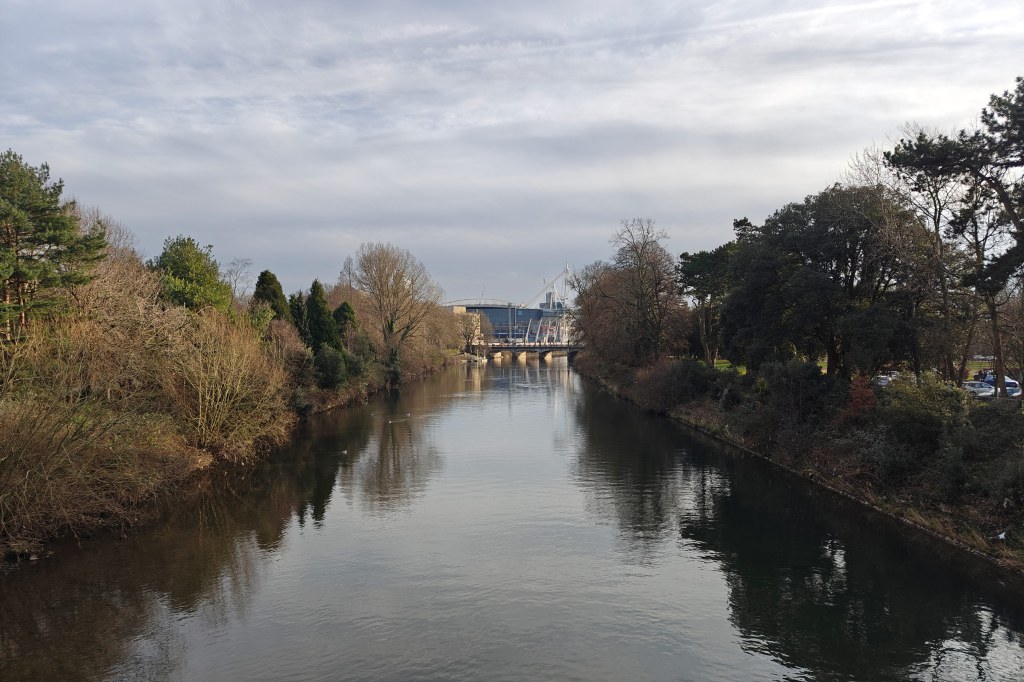
Distortion wise, the ultra wide lens isn’t too bad, while the 3x lens is a good option for getting closer to the subject – and is certainly an improvement on the more limited 2x option found in the OnePlus 11. “In-sensor” 6x zoom – where the phone uses the central portion of the sensor – also produces good results that are very usable and saves the need for an extra lens.
Beyond that and moving into digital zoom, the results are a little less impressive, but if you stick to around 10-15x, you can get some workable results if you’re mainly after a record shot, rather than something which boasts super sharpness.
With the OnePlus 11, I found that indoor shots under artificial light took on a more yellowish hue than I’d have liked, but that seems to have been improved here with the results being a bit more correct, which is good news.
The lenses in the OnePlus 12 benefit from a special lens coating which is designed to reduce flare. On the whole, images didn’t suffer too much from flare but there were a couple of occasions when shooting in very bright and challenging conditions when I noticed some lens flare appearing – but low lying winter sun would be a challenge for even the best lenses, so that’s not particularly worrying for most ordinary conditions.
Macro mode allows you to get nice and close to a subject and produces some good detailed shots. It’s good to have this option on a mid-range priced phone as sometimes this is one of the functions that is missed at this price point. It works well for things like flowers and other small subjects.
Night mode is also pretty impressive. In the shots here, the foreground in real life is in pretty much complete darkness so the phone has done well to pick out so much detail. Again, the best results can be seen with the main sensor, which is unsurprising. The ultra wide angle lens doesn’t fare too badly, but you can see some more obvious smudging. For the 2x, 3x and 6x options, the phone simply crops from the 1x lens when it’s this dark – again that’s not particularly surprising, with the results being reasonable at 2x and 3x, but best avoided at 6x. There are slightly better models out there for low light – notably the Samsung S23 Ultra – but as an all-round performance, this is pretty good.
Portrait mode boasts the credentials of Hasselblad, with the results supposed to be a recreation of certain expensive lenses. Of course this is hyperbole, but the results are fairly good nevertheless. It works well with both human and non-human subjects, though we can see if someone has fine hair, it can produce visibly obvious outlines – which of course a real Hasselblad lens wouldn’t suffer from.
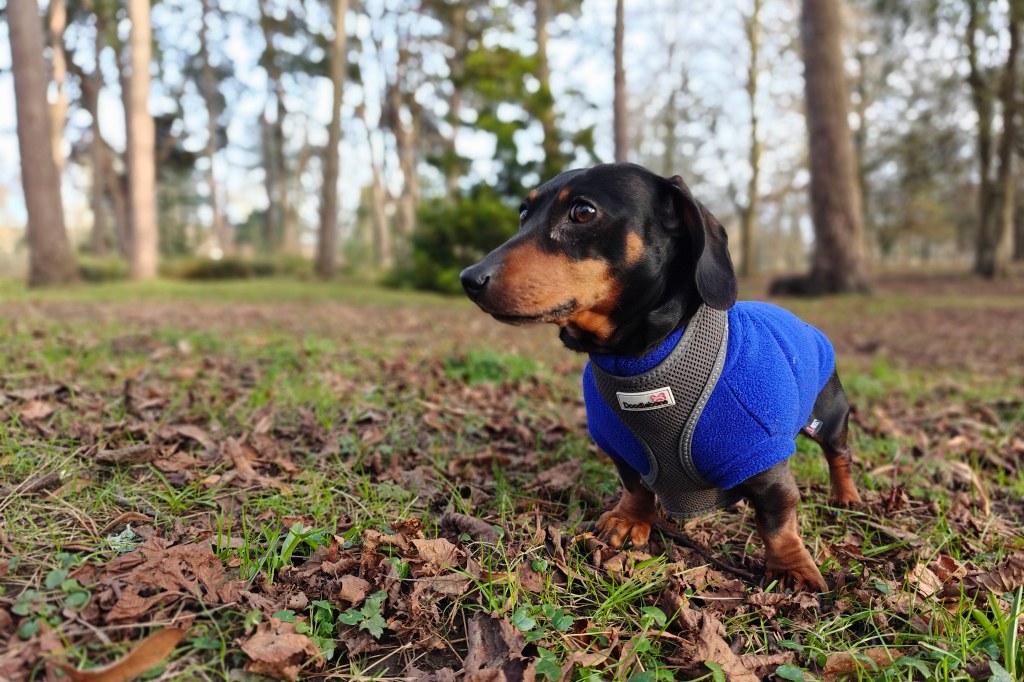
The selfie camera is fixed focus, but it has done a pretty good job here. You can also choose to use Portrait mode in selfie orientation if you want a shallower depth of field job too.
Other interesting shooting options include a high resolution mode which you can use with all three lenses. This means you get images at the full resolution of each sensor, rather than a pixel binned lower resolution shot. This can be useful if you want to photograph something with lots of fine detail.
Creative options can be found in the different digital filters – the results are mixed but are worth experimenting with. I quite like the black and white options, but it’s disappointing that you can’t remove them after the fact, so I’d probably shoot in colour and then convert afterwards in most situations. A fun “tilt shift” mode can be employed, which gives the impression of shooting a miniature – again you can’t remove this effect after the fact so it’s best used sparingly.
Video results are also pretty good, producing smooth and well-detailed footage. Having the SuperSteady option is useful if you want to shoot videos with lots of movement, such as walking and talking in a vlog style. 8K is likely to be overkill for almost everybody, but it’s nice to have the option should you need it.
OnePlus 12 – Value for Money
While not cheap, at $799 / £899 for the 256GB version of the OnePlus 12, you get excellent value for money here – especially for a flagship model which boasts the features it does.
If you compare it to the likes of the Google Pixel 8 Pro, Samsung Galaxy S24 Ultra and iPhone 15 Pro, you’ll be saving a decent chunk of change. You can pay more and get more storage if you like, but for most, the 256GB option will likely be plenty – particularly if you’re happy to store files in cloud services to free up space on the phone. That said, it’s not a ridiculous jump in price if you do want to get that extra storage – and again, compared to other brands with similar storage it’s very well priced.
On the other hand, it’s worth thinking about the longevity of your phone, and how well it will hold its value. iPhones and Samsung models are expensive, but they tend to be reasonably easy to sell on the second-hand market, while lesser-known brands such as OnePlus can be trickier. The support for OnePlus phones is also not as long-lasting as other brands too.
OnePlus 12 – Verdict
As ever, we continue to be impressed by the quality of smartphone cameras. OnePlus has been producing well-performing models for some time now and the OnePlus 12 builds on that to create excellent results.
While I’m not sure I’d agree with it being quite the revolution the company’s marketing promises, there are some improvements to the camera from the OnePlus 11 – notably in the lengthier third lens, while on the whole you get excellent image quality across various conditions and a range of good shooting options. On the whole, most improvements seem to come elsewhere – such as the new brighter screen, wireless charging and so on.
The native camera app gives you a reasonably comprehensive set of controls, though there are some niggles – such as only being able to shoot in raw format in Pro mode, and when you do not have a corresponding JPEG file. We’d also like to see more options for adjusting photos after the fact – Apple, Samsung and Google offer far more in that respect.
Overall, we’ve got another very well-performing model from a company which is not one of the “big three”. As such you don’t have to pay the “fame” premium to get flagship performance, but, it’s probably less good at holding its value, which is certainly something to think about once you start spending over £800 for a smartphone.
OnePlus 12 Specifications:
- Ultra-wide camera: 1/2” Sony IMX581 48MP sensor, 14mm equivalent, f/2.2
- Wide camera: 1/1.4” Sony LYT-808 50MP sensor, 23mm equivalent, f/1.6
- Telephoto camera: 1/2” OmniVision OV64B 64MP sensor, 3x optical zoom, 6x in-sensor zoom, 70mm/145mm equivalent, f/2.6
- Front selfie camera: 1/2.74” Sony IMX615 32MP sensor, 21mm equivalent, f/2.4 fixed focus
- Display: 6.2-inch, 3168 x 1440 (QHD+), 4500 nits peak brightness, 120Hz
- Operating system: Oxygen OS, based on Android 14
- Dimensions: 164.3 x 75.8 x 91.5mm
- Weight: 220g
Related reading:
- One Plus 11 full review
- iPhone 14 Pro vs Oneplus-11-cameras-compared
- First folding phone from OnePlus, with powerful photo features
Follow AP on Facebook, Twitter, Instagram, YouTube and TikTok.

